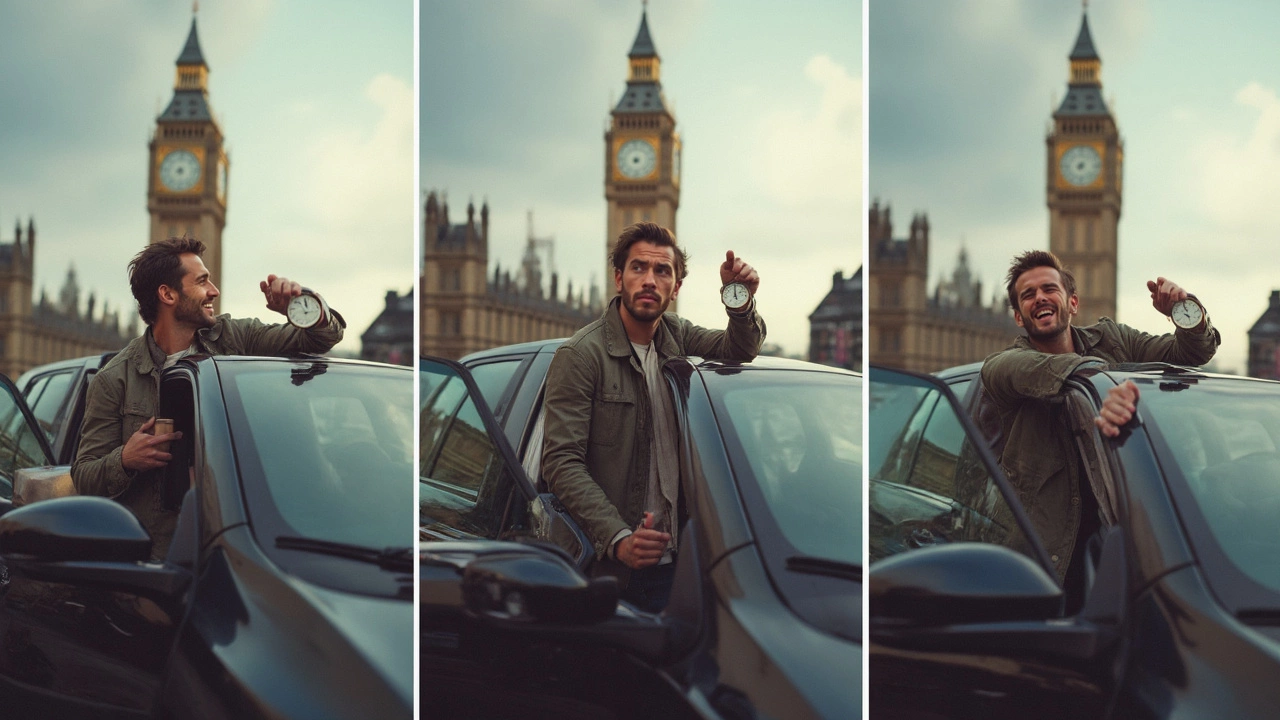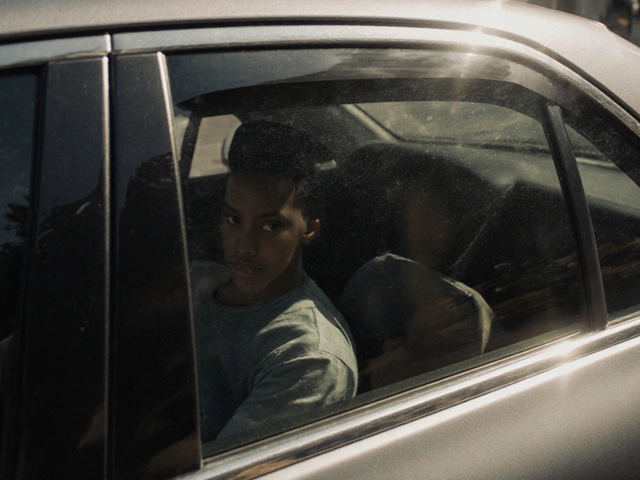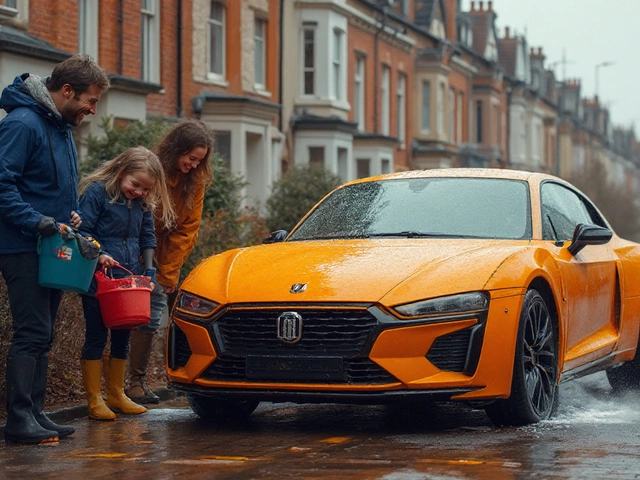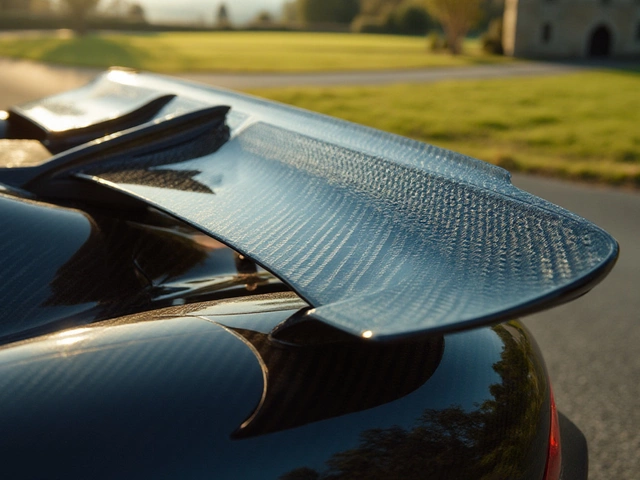So you just got your car windows tinted and you're itching to crack open those windows for some fresh air. Hold up—this might seem simple, but timing really matters here. Roll them down too soon and you could mess up your shiny new tint. Nobody wants bubbles, peeling edges, or wrinkles ruining that clean look.
The trick is all about letting the tint film cure, which is just a fancy way of saying "letting it dry and settle." This isn’t like waiting for pizza to cool—if you get impatient, you'll end up with problems that cost more to fix than the tint did in the first place.
- Why Waiting Matters
- The Magic Number: How Long to Wait
- Factors That Affect Drying Time
- Signs Your Tint Isn’t Ready
- Tips to Protect Your Tint
Why Waiting Matters
The urge to test out your freshly-tinted windows is real, but you’ve got to give the film time to set. The adhesive on your tint needs hours—or sometimes days—to bond completely with the glass. If you roll those windows down too soon, you risk lifting the edges, trapping air, and creating wrinkles you’ll be looking at for years.
Straight after tinting, there’s usually a bit of moisture sandwiched between the film and the glass. This is normal, but it has to evaporate before your tint’s really sealed on there. If you jump the gun, you’re basically pulling up an uncooked sticker, and nobody wants to pay twice for the same job.
Here’s the deal: Tints that don’t cure long enough will almost always bubble, peel, or flake—and once that starts, there’s no real fixing it. It’s not just about looks, either. A botched tint job can cut down on the lifespan of the film, leaving you with patchy shade and less heat or UV protection than you paid for in the first place.
- Modern tint adhesives often use pressure-sensitive chemicals that form their final bond during the curing window.
- Window tinting pros swear by the "no touch" rule: Don’t touch, clean, or roll down until you’re sure the film is cured.
- In most states, removing or damaging freshly applied tint means you might also have to re-certify your window film if your area has tint laws.
To give you a sense of what can go wrong, here’s a quick look at the most common risks if you skip the wait:
| Risk | What Happens |
|---|---|
| Bubbling | Moisture and air stuck, making windows look spotty |
| Peeling/Edges Lifting | Film detaches, especially at window seals |
| Decreased UV Block | Damaged tint loses its protective punch |
| Shortened Tint Life | May need full re-tint, costing $150–$500 again |
In short, that wait after window tinting is more than just a suggestion—it's your ticket to getting the most out of your window tinting investment. A little patience up front keeps your ride looking cool and protects your wallet down the line.
The Magic Number: How Long to Wait
Here's the deal—most pros say the safe waiting time is 2 to 4 days before rolling your windows down after getting them tinted. That’s about 48 to 96 hours. Why the range? Because different things affect it, like weather and the type of tint film used. But let’s keep it simple: if you want to avoid messing up the job, wait at least three days, just to be on the safe side. If your installer says something else, go with their advice—they know the exact product and what works best for your car.
During those first few days, your window tint is bonding to the glass and curing. Rolling down the window creates pressure at the edges that can peel, wrinkle, or bubble up the film—especially if it’s not fully dry yet. That’s why the waiting period is a big deal for any kind of window tinting, whether it's a pro job or a DIY kit from the store.
Check out how tint curing time stacks up depending on the season and environment:
| Condition | Average Wait Time |
|---|---|
| Hot/Dry Weather | 2-3 days |
| Cool/Humid Weather | 3-5 days |
| Ceramic Tint | 3-4 days |
| Dyed Tint | 2-3 days |
If you park your car outside in the summer heat, the cure time might be a little faster. But if it’s cold or rainy, be patient—it could take even longer. Rolling down your windows too early could send you right back for a repair job (that you’ll probably pay for).
If you’re not sure if it’s ready, just reach out to your installer. Most are happy to give you the thumbs up or tell you to wait another day. Go by their word. Your patience pays off every time you cruise with perfect, bubble-free tint.

Factors That Affect Drying Time
Not everyone’s window tint dries at the same speed. There’s no universal timer you can set. A bunch of factors blend together to decide how long you have to wait before rolling down your windows. Knowing these helps you avoid wrecking your fresh tint job, and lets you get back to normal faster.
First off, weather is a huge player. Warm and sunny days speed things up, while cloudy, chilly, or rainy weather can add extra days to that wait. For folks living where the summer sun beams down, your tint can dry within two to three days. If it’s cold, gloomy, or humid, it might take a whole week—or longer.
The type of tint matters too. Dyed films usually dry quicker than ceramic or metalized films because they’re thinner. High-end ceramic tint is awesome for blocking heat, but its thicker layers need more time to cure right. If your installer uses multiple layers or thicker material, tack on a couple extra days just to be safe.
Let’s not forget about the installation process. Some installers are pros and can apply tint without leaving behind any extra moisture under the film. But if there’s a lot of water used, it’ll stick around longer, making you wait it out. This is where pro shops really shine compared to quick DIY jobs.
Here’s what the International Window Film Association says about curing:
"Film drying time depends on weather, film type, and installation. Window tint may take a few days to several weeks to fully cure."
The last factor is your car itself. Older cars have flatter windows that dry out quicker, while new cars with all those curves and fancy seals trap more moisture, slowing down the process. If your car’s windows roll into deep seals or have dark edges, expect a bit more downtime.
- Weather: Hot and dry is fast, cold and wet is slow.
- Film thickness: Thicker films (especially ceramic) need longer to dry.
- Installation style: More water under the film means longer drying time.
- Car window design: Modern, curved windows and deep seals delay drying.
If you want to make sure your window tinting turns out flawless, just watch these details and stick to the timeline your installer gives you. It saves money, and you won’t be the guy with peeling tint and regrets.
Signs Your Tint Isn’t Ready
Trying to guess when your tint is good to go? Don’t risk it. There are pretty clear signs your window tint still needs time to cure, and ignoring them can mess up a solid install.
Here’s what you want to look out for before you even think about rolling your windows down:
- Foggy or Cloudy Appearance: Right after tinting, windows might look hazy or even a little milky. That’s normal for the first few days—it's just trapped moisture working its way out. If your windows still look cloudy after three or four days, it’s not ready.
- Bubbles or Water Pockets: You might see tiny bubbles or pockets of water between the glass and the film. These should shrink and disappear as the tint dries. Rolling down your windows with bubbles still showing is a recipe for permanent creases or peeling.
- Soft or Sticky Edges: Run your finger gently (don’t pick!) around the edge of the tint film. If it feels tacky or lifts at all, back off—the adhesive hasn’t set.
- Humidity Matters: If it’s been raining or unusually humid, curing slows down. Don’t just go by the clock; trust what you see and feel.
After a professional job, most installers say to wait at least 3-5 days before touching your windows. Doesn’t matter if you’re itching to crack them open—the risk isn’t worth it.
| Weather | Average Wait Time |
|---|---|
| Hot/Dry | 2–3 days |
| Mild | 3–5 days |
| Cold/Wet | 7+ days |
Keep an eye on your tint job. If you notice any of these warning signs after the "safe" waiting period, call your installer. Good shops will check things out and fix issues if needed, especially if it’s just moisture that won’t evaporate or edges that keep peeling. Play it safe for the first week—your window tinting job will last longer and look sharper if you do.

Tips to Protect Your Tint
Now that you’ve got those windows looking crisp, it’s easy to just relax. But if you want that window tinting to stay sharp and bubble-free, there’s some stuff you’ll want to keep in mind. A little extra care in the first few weeks can make your tint job last much longer.
- Don’t clean too soon: Skip cleaning the inside of your tinted windows for at least a week. Water or cleaner can mess with the film before it’s fully set.
- Use the right cleaner: After your tint’s cured, avoid anything with ammonia. Go for mild, tint-safe cleaners and a microfiber cloth. No scrubbing with paper towels—they scratch.
- Be gentle with seat belts: Slamming seat belts against the glass can chip or scratch new film, especially in the first month. Swing those belts back gently, just for a while.
- Skip stickers and suction cups: Stickers, phone holders, or anything that uses suction on the glass will leave marks or peel the film. Keep them off tinted windows.
- Guard against pets and kids: Dog paws, messy fingers, or toys can wreck tint fast. If you cart kids or pets, keep an eye on them till the tint is fully bonded.
- Outdoor parking helps: Direct sunlight speeds up the curing process. If you can, leave your car out in the sun instead of a shaded garage for the first few days.
Some people want specifics—so here’s what tint pros usually say about care timing at a glance:
| Care Tip | How Long to Wait |
|---|---|
| Rolling down windows | 3-5 days (standard), 7+ days (in cold/humid weather) |
| Cleaning inside glass | 1 week |
| Adding stickers/suction cups | 2 weeks |
| Washing exterior glass | Can do after 24 hours, but be extra gentle near edges |
One last thing—watch out for water bubbles early on. These usually go away in a week or so. If they don’t, or if you spot peeling edges, go back to your installer for a quick fix while it’s still covered under warranty. Little habits make the difference between a sweet-looking tint and one that just looks sad.






